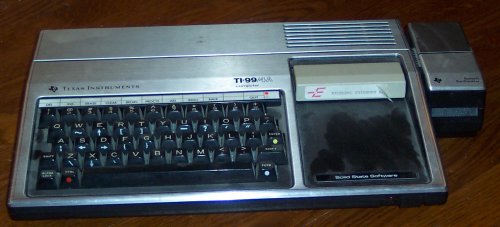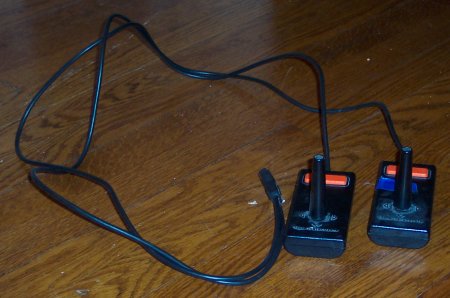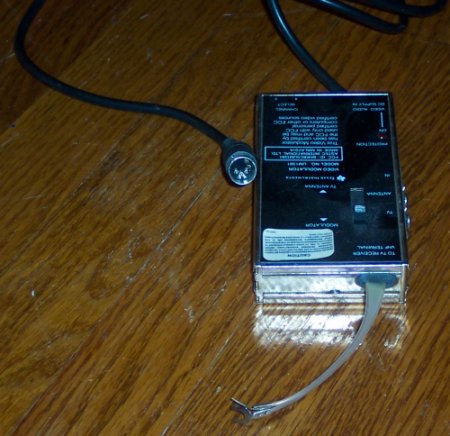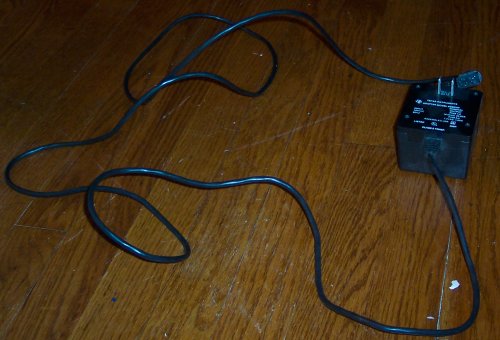 "A wide range of programs exists now for the Texas Instruments Home Computer. And more are coming almost daily. That means that the number of things you and your family can do with the Home Computer continues to grow.
"A wide range of programs exists now for the Texas Instruments Home Computer. And more are coming almost daily. That means that the number of things you and your family can do with the Home Computer continues to grow.
"Programs for the Home Computer come in three easy-to-use formats, snap-in Solid State Software Command Modules, 5 1/4" floppy diskettes and standard audio cassette tapes." --Texas Instruments Home Computer Box
One of my favorite computers is the Texas Instruments TI99 4/a (TI for short). This was the first real computer I had, and used it quite a bit. I didn't write much code on the system, but would often play Parsec or Hunt the Wumpus.
The most unusual and interesting part of this computer is the Speech Synthesiser. It's amazing to hear good synthesized speech from a computer released in the early 1980's! Mainstream computing took quite some time to catch up. While some of this text-to-speech seems new, the TI was doing it already. Granted, the speech synthesizer could only say 300 words without help, but when you have a simple game that says "Oh no!" or maybe "Nice Shooting!" (Parsec) what do you need a big vocabulary for?
From a technical stand point, what was weird about the TI was the power supply provided AC current of two different voltages rather than conventional DC. Also, the video signal sent out from the system was unmixed, with seperate Audio and Video (which new game systems are starting to use now) that was modulated to standard video. Thus, rather than using the name "RF Switch" (which was half the function), Texas Instruments used the more specific term "Video Modulator."
Another infamous quirk about the TI was this: The joysticks wouldn't move up if the Alpha Lock key was pressed. If you have ever played a game and not been able to move up, you probably have experienced this design quirk.

Atari 2600 joysticks feel fragile and loose next to these (and actually are). I have come to love the feel of the TI joysticks over the Atari 2600 joysticks, and others do too. While it is possible to use Atari joysticks on the TI (with an adaptor cable), I believe it is best to use the TI joysticks... you may want to make an adapter to use these on the Atari!

This is one of the most often-broken peripherals on the TI994a. The problem lies in the cable to go from computer to TV. There are 5 conductors in that cable, and they don't take well to flexing. If any one of those conductors breaks, you lose either picture or sound (or both.) Treat the cable with respect, and the computer will happily keep displaying output and talking to you (speech synthesisor.)
If the cable breaks anyway, someone with basic soldering and electric skills can fix it. Skills needed are: The ability to make a good solder joint, and knowing how to use an continuity tester or multimeter. Simply figure out which wire is broken, and solder a new wire in the place of the old. Tape it to the original cable and you should be good to go.
To hook up the video modulator to a new TV, you will likely need a matching transformer. There are two forms of matching transformers you can get, one to go from two wire (300 ohm) to coaxal (75 ohm) and one to go from coaxal to two wire. You want the one that goes from two wire to coaxal. Often, this will have a "right angle" design. You'll need the other type if you want to hook up a coaxal input to the input on the side.
There are two switches that may be important. At the bottom (closest to the computer) of the video modulator there is a channel switch. Your TV must be set on the channel indicated for this to work with the computer. The other part is the RF switch. Moving the switch all the way up is for using the computer, moving it all the way down is for using the TV. If you're using the TV, the channel switch does not function.

There are two power supplies that were distributed with the TI 994/a. While both put out equal voltages, the big difference was where the electronics were located. One power supply was of the "Wall Wort" design, where the electronic part was located next to the outlet. (This is a common design.) The other had the electronics mounted about half-way between ends of the cable, and used a lot less space near the outlet. (If you've ever tried to plug two wall wort power supplies in to a single power strip, you immediately see the use for having the electronics elsewhere.)
Most computer power supplies change the power from 120 volts AC to 3 - 12 volts DC. The TI 994/a was different, however. It changed the voltage to a lower voltage AC (I think 14 and 18 volts, but don't quote me.)
There was a safety adapter that TI released (I have an newspaper clipping of it somewhere) due to the fact that their power supply COULD (but had not as of the time of the article) harm someone. I believe my "middle of the cable" power supply has one of those adapters on it.